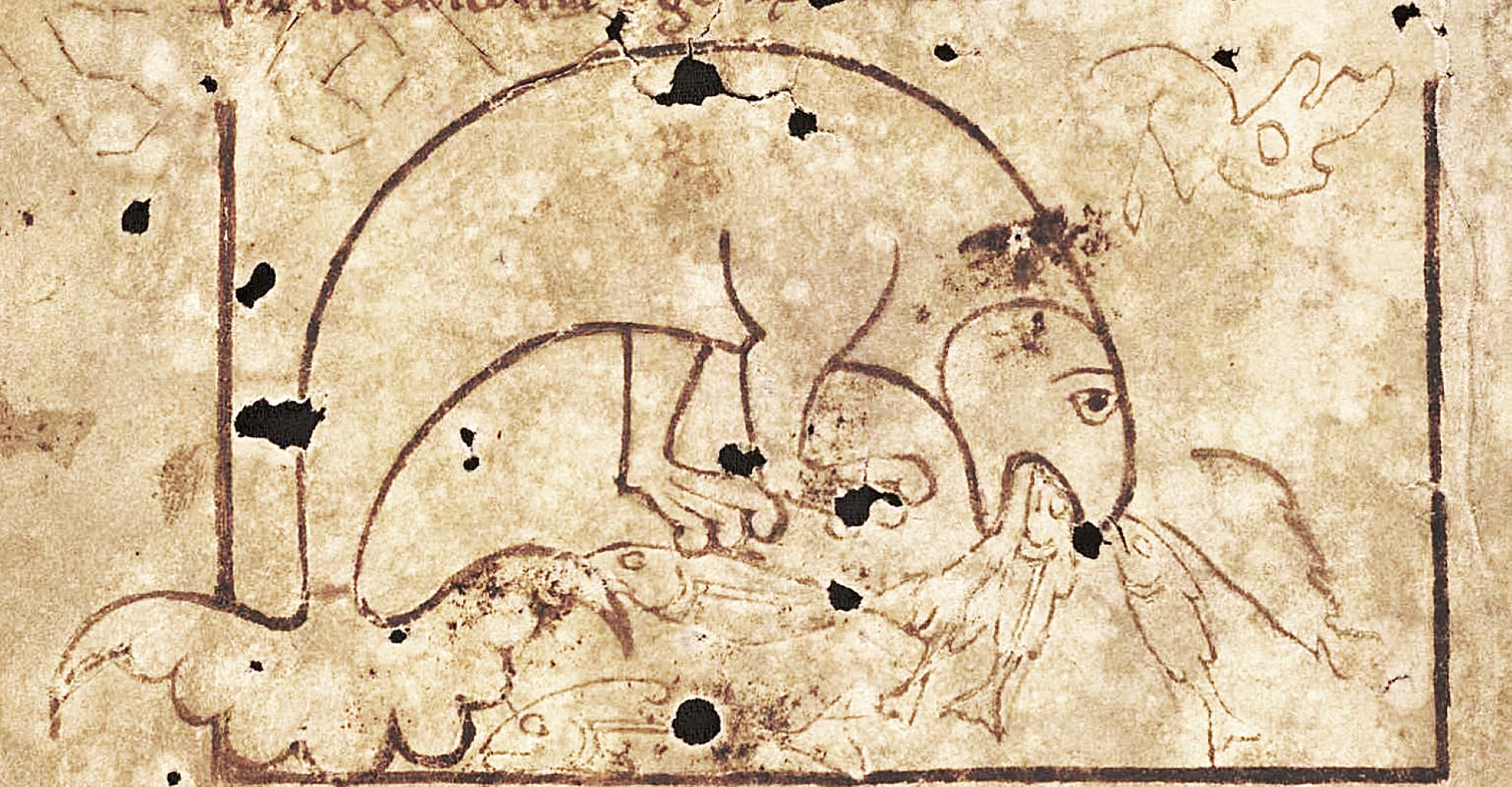

For as long as people have been telling stories, fables and legends have been used to explain the forces of nature. The Greeks made up tales of gods and heroes to teach why we have changing seasons or why misery and evil exist in the world. Medieval folktales rattled on about unicorns and men with dog heads. Norse mythology talked about giant sea monsters lurking in the ocean, ready to devour fish and ships that dared cross their path.
As far-fetched as these stories were, many hold a grain of truth, or were at least inspired by real encounters. Famed traveler Marco Polo, for example, believed he saw the first unicorn when he first laid eyes on an Indian rhinoceros. The latest example of animal mix-ups could explain a giant, mythical ocean beast, called the hafgufa, of Norse sagas. A study published Tuesday in Marine Mammal Science found that the feeding behavior in whales is similar to ancient Scandinavian texts describing the monstrous animal.
The hafgufa, a sea creature first mentioned in the 13th century in Old Norse mythology, was believed to have roamed Icelandic waters. It would lie in wait on the ocean’s surface, emitting a perfume that would lure fish into its wide-open mouth. Though described in several Norwegian tales, scholars were mystified about its origins. Some postmedieval historians have argued it was a derivative of other mythical creatures, such as mermaids or the Kraken. Other texts referred to it as a type of whale-fish.
[Related: Siberian unicorns lived alongside humans, and they were so much cooler than the mythical version]
John McCarthy, a maritime archaeologist at Flinders University in Australia and lead author of the new report, learned of the hafgufa when he was studying a hunting strategy of certain baleen whales: The behavior, called trap-feeding, involves whales lying motionless in a vertical position with their mouths open at the surface. The whales keep the corners of their mouths partially below the surface, letting water pool into their mouths. Whales use their jaws to create a current in their mouths to lure panicked fish into what the prey mistakenly believes is a safe space.

McCarthy caught a BBC documentary describing the mythical sea creature, which sounded a lot like what he’d observed in his whale research. Curious about the similarities, he spoke with some professors of medieval studies at his university who pointed him to some historical literature on Norse sea monsters. “The story just kept getting more interesting,” he recalls.
Old Norse text from Konungs skuggsjá, or (The King’s Mirror, described trap-feeding activity that McCarthy and his colleagues say is similar to Eden’s whales hunting off the gulf of Thailand, as captured on video. The early Greek text of Physiologus also illustrated the trap-feeding behavior of hafgufa and another giant mythical creature, known as aspidochelone —think of a large sea turtle with an island on its back—that ate in the same way.
[Related: A group of humpback whales is choosing violence]
As the unknown author of Physiologus wrote: “When it is hungry it opens its mouth and exhales a certain kind of good-smelling odor from its mouth, the smell of which, once the smaller fish have perceived it, they gather themselves in its mouth. But when his mouth is filled with diverse little fish, he suddenly closes his mouth and swallows them.”
Trap-feeding behavior is a food strategy discovered in 2011 and documented on video. So how did Scandinavians observe this action 2,000 years ago? “It can be easy to forget that people in the medieval past were just as discerning as we are today,” says Lauren Poyer, an assistant teaching professor of Scandinavian studies at the University of Washington who was not involved in the study. “Their cultural knowledge and traditions were just as rich, and potentially even more valuable, than our knowledge today when it comes to surviving and thriving in their unique landscapes.”
McCarthy speculates the trap-feeding behavior was likely more visible because more whales existed then compared with today’s population, which has been decimated by commercial whaling. “It makes perfect sense to me that the Konungs skuggsjá and Ǫrvar-Odds saga authors would have knowledge and possibly direct observation of a fairly rare feeding behavior, as this article suggests,” adds Seth Koproski, an English doctoral candidate at Cornell University who has studied Physiologus and other ancient texts, and who was not affiliated with the new report. He says the Norse were expert seafarers who explored the northern Atlantic Ocean and they likely would’ve had consistent, direct contact with a large and diverse population of whales.
[Related: These now-extinct whales were kind of like manatees]
The hafgufa used to be an allegory for the devil, Koproski says, and its trap-feeding behavior symbolized deceitful snares that caught fish “of small faith” lured in by attractive odors. “These kinds of allegorical understandings were common in medieval Europe and the concept of nature,” he explains.
There may be other real-life inspirations for fictional creatures lurking out there, too. A popular theory is that the one-eyed cyclops was inspired by elephant skulls, because the holes from their trunks could resemble giant eye sockets. And another suggests dinosaur fossils may have encouraged tales about dragons. With more research, the hunt for mythical beasts continues.
